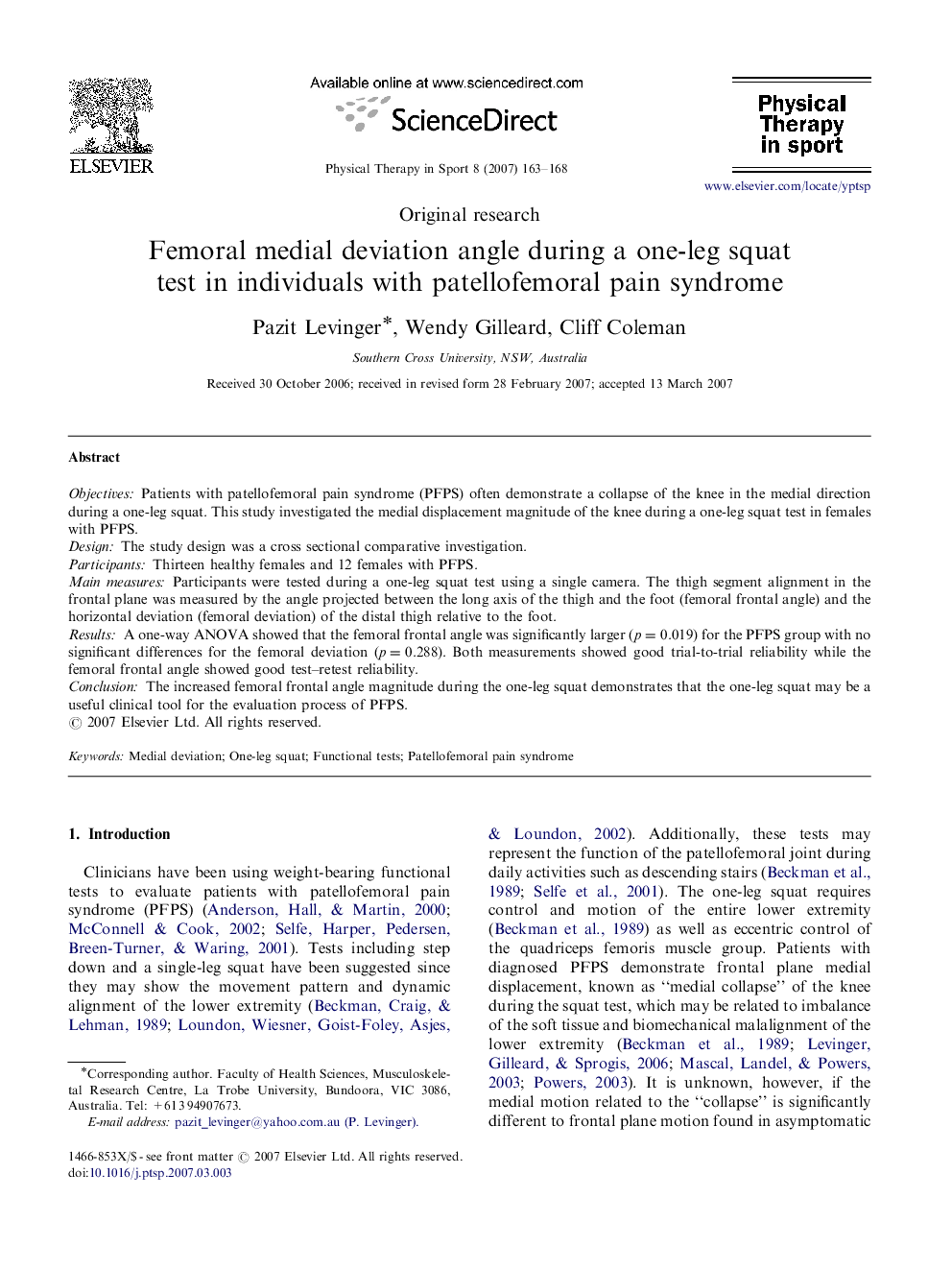| Article ID | Journal | Published Year | Pages | File Type |
|---|---|---|---|---|
| 2706208 | Physical Therapy in Sport | 2007 | 6 Pages |
ObjectivesPatients with patellofemoral pain syndrome (PFPS) often demonstrate a collapse of the knee in the medial direction during a one-leg squat. This study investigated the medial displacement magnitude of the knee during a one-leg squat test in females with PFPS.DesignThe study design was a cross sectional comparative investigation.ParticipantsThirteen healthy females and 12 females with PFPS.Main measuresParticipants were tested during a one-leg squat test using a single camera. The thigh segment alignment in the frontal plane was measured by the angle projected between the long axis of the thigh and the foot (femoral frontal angle) and the horizontal deviation (femoral deviation) of the distal thigh relative to the foot.ResultsA one-way ANOVA showed that the femoral frontal angle was significantly larger (p=0.019) for the PFPS group with no significant differences for the femoral deviation (p=0.288). Both measurements showed good trial-to-trial reliability while the femoral frontal angle showed good test–retest reliability.ConclusionThe increased femoral frontal angle magnitude during the one-leg squat demonstrates that the one-leg squat may be a useful clinical tool for the evaluation process of PFPS.
